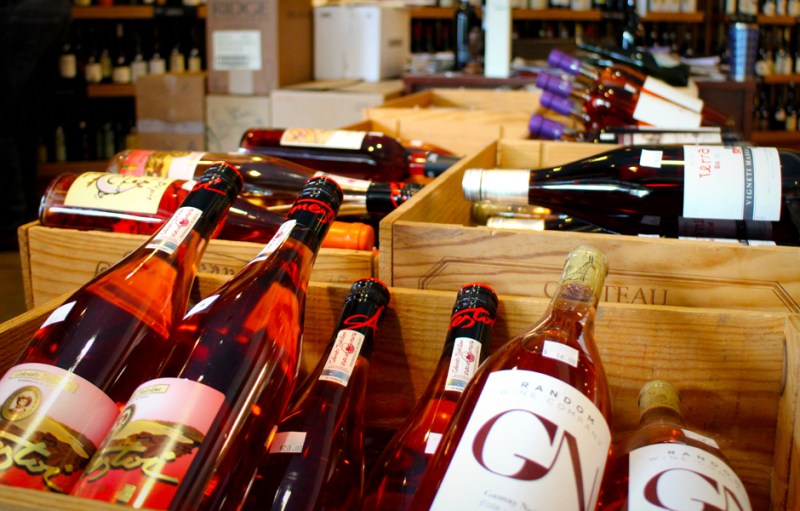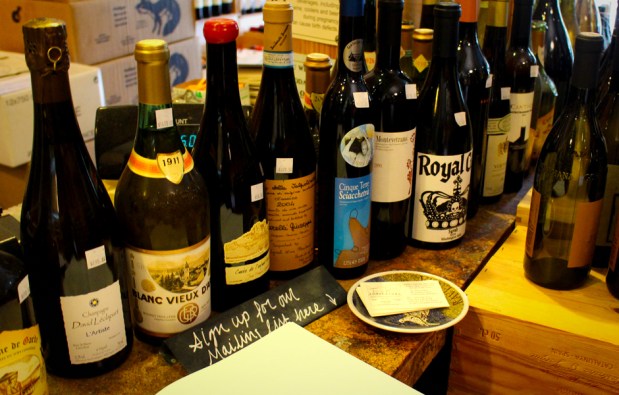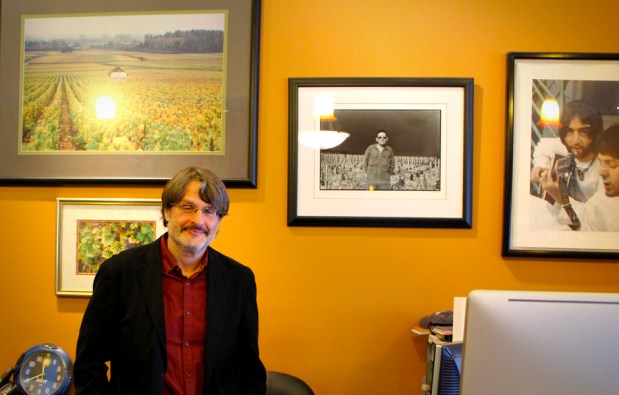

Red or white wine? How do you choose? How do you play with the old “white for seafood and chicken, red for everything else” rule?
Richard Elden: The old fashioned rules work fairly well, except you throw in the wrinkle nowadays of sparkling wines, which are equally fantastic with both types of food, I think it’s the way of the future. One of the other things we have to get into now is that people are eating a lot more Asian cuisine, which can be tricky. Whether it’s Japanese, different types of Chinese, Thai, or Vietnamese, sparkling wines are great, and they’re one of the few types of wine that go well with spicy food. Rules are made to be broken, but there’s also a reason and tradition behind pairing certain types of wine and cuisine.
Ed Paladino: I think one of the major factors with this question is whether you want something that’s going to go well with the food, which means that the wine is going to taste better, and the food is going to taste better. If that’s really what you want, then you need to be careful to avoid two common pitfalls: The first is picking a wine from the list that you’re familiar with because you don’t see anything else you recognize. The second is picking a bottle that you think is going to impress someone else. Even if the restaurant has a good wine person, and they’re recommending wines that are genuinely going to match the food, if the person ordering isn’t comfortable with those wines it can be an awkward situation. My best advice if you’re going into it and don’t know that much, try to get some information from the people serving the wine.

Richard: America has an interesting wine culture, because here people will have a glass of wine as a beverage, or as a cocktail, and don’t think about it as an integral part of the meal experience. Often in France you’ll go out for dinner, and there will be less choices, because you’re eating a certain type of food in a specific region, so it narrows down your choices to those which have, historically, matched well with that type of food. It’s part of a meal, enhancing the food and being enhanced by it in turn, which is part of the holistic view of why you go out to dinner.
Ed: There’s also the question of the wine itself. If you’re having a dish that theoretically goes well with a chardonnay, where is the chardonnay from? How is it made? Is it a big, oaky wine that bears no relationship to the grape? Or is it a wine that’s done in an easier style where you can actually taste the fruit? An easier style like a chablis that’s not particularly wooded is going to taste different than bigger wines. Everything gets lost in translation, and it’s a learning experience – the more people can try different things, the better they’ll start to form their own ground rules, because something that works for you might not work for me. So when you’re at home and have half a bottle from yesterday, or you’re going to open a new bottle, it can be really helpful to taste a few different wines and see what works and what doesn’t. Sometimes a wine will taste okay on the surface, but when you find some food that’s a really good match, the wine and the food will both taste better, and you’ll have that “woah” moment.

What kind of homework should you do before heading into battle? What questions should you ask to get the wine you’re looking for?
Richard: One thing, going into the restaurant, is have an understanding of what they’re trying to cook. If it’s more French, or Italian, or Pacific Northwest influenced, you should use that to lead you. Maybe it’s just me, but I’d get disgruntled if I’m in an Italian restaurant and they’re suggesting a non-Italian wine, unless it’s been selected by someone super talented.
Ed: If the restaurant has a good wine list and a good wine program, you would hope that the server might be able to give you, or get for you, a little bit of information about the characteristics of the wine: Is it spicy? It is heavy on alcohol? Is it aromatic? The kinds of qualities that will help you make a better decision. If somebody comes in here and tells us they want a wine to go with this appetizer or that entree, or that tastes a specific way, between the three of us, we can tell you about every wine in the shop. From a restaurant standpoint, you would hope the server could answer those questions similarly, or could find someone that can.
Richard: If it’s a wine that’s offered by the glass, some establishments have been known to bring you a taste so you can get an idea of it before you buy a bottle. Depending on the restaurant they may want to bring you one as part of the process.

A lot of people suggest buying the second cheapest bottle for good value, is that accurate?
Ed: That depends on the restaurant you’re sitting in. If they have a good wine program, and the people making those decisions are really on top of it, you ought to be able to find something that’s good in any price range. There shouldn’t be a fear of taking the cheapest wine or the most expensive. There’s a lot of great value out there, and it has much more to do with the person who put the wine list together and what their ideas are, than how much money it makes. There’s a distinct difference between buying a bottle and buying glasses too, but it has more to do with personal preference. If the table is getting a bottle, then everybody, for better or worse, is drinking that. If a restaurant has a good glass program, I’ll order two or three different wines by the glass, it’s more fun and interesting, but it comes down to choices again.
The E&R Wine Shop is well stocked with over 2000 wines from the USA, Italy, France, Spain, Austria and the rest of the world. You can visit their physical location in Southwest Portland or check them out on Facebook for selections, pairings, and reporting from wine events all over the world.


